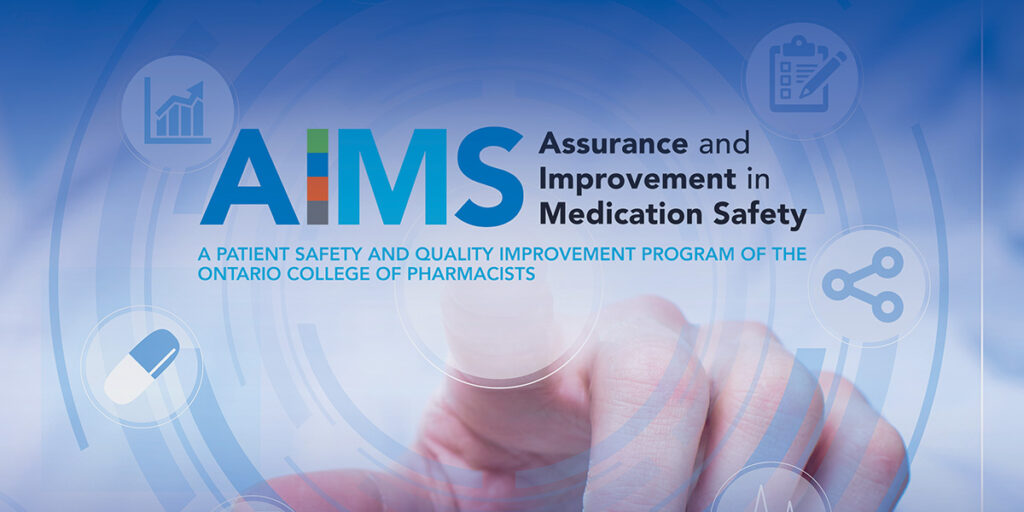By Ian Stewart R.Ph, B.Sc.Phm.
The selection of an incorrect drug during computer order entry is a common source of medication errors. The potential for error is enhanced when two drugs have similar names, strengths and directions for use as the following case highlights.
CASE:
Rx:
Hydroxyzine 25mg tablets QID PRN
Mitte: 30
The above printed prescription was presented to a local community pharmacy for processing.
When entering the prescription into the computer, the pharmacy assistant typed the first few letters of the drug as “apo-hydr”. The system displayed a list of drugs with the various strengths of hydralazine at the top.
Due to the similarities of hydroxyzine and hydralazine, the pharmacy assistant erroneously selected hydralazine 25mg tablets. Unfortunately the pharmacist that checked the prescription for appropriateness failed to identify the computer entry error. The incorrect drug was therefore dispensed.
The patient returned to pick up the medication later. On this occasion, another pharmacist was summoned to counsel the patient.
Before reading the prescription label and accompanying documentation completely, the pharmacist asked the patient, “What did the doctor prescribe the medication for?” The patient replied that it was for her itchy skin.
The pharmacist looked at the label and assumed that he saw hydroxyzine. He therefore proceeded to counsel on hydroxyzine though he was providing hydralazine to the patient.
Approximately one hour later, the pharmacist reflected on the patient counseling encounter and recalled providing tablets to the patients though hydroxyzine is only available in a capsule form in Canada.
Upon checking the original prescription and computer records, the error was detected. The patient was immediately called to discuss the error. Unfortunately the patient had already taken a dose of the incorrect drug by that time.
POSSIBLE CONTRIBUTING FACTORS:
- Similarity between hydroxyzine and hydralazine.
- Both hydroxyzine and hydralazine are available as 25mg and are taken four times daily.
- The physician prescribed tablets though hydroxyzine is only available in capsule form in Canada.
- Both pharmacists involved indicated that they felt certain they saw hydroxyzine being dispensed and not hydralazine. This phenomenon of seeing what is familiar and not what is actually there is often referred to as confirmation bias.
RECOMMENDATIONS:
- Educate all pharmacy staff about the potential for error when dispensing drugs with similar names. Other problematic pairs include:
Dimenhydrinate : Diphenhydramine
Fluocinonide : Fluocinolone
Pantoprazole magnesium : Pantoprazole sodium
Dicetel® : Diclectin®
Ceftin® : Cefzil®
Lasix ® : Losec ®
- Before counseling patients, take the time to carefully review the prescription label and accompanying written material. This will provide the opportunity to catch potential errors and prevent the provision of one patient’s confidential information to another.
- Whenever possible, open the prescription vial during patient counseling to examine the contents and identify any potential dispensing error.
Please continue to send reports of medication errors in confidence to Ian Stewart at: ian.stewart2@rogers.com . Sharing your experience can prevent similar occurrences at other practice sites. Please ensure that all identifying information (e.g. patient name, pharmacy name, healthcare provider name, etc.) are removed before submitting.

APPLYING THE AIMS PROGRAM TO THIS INCIDENT
Under the Assurance and Improvement in Medication Safety (AIMS) Program, pharmacy professionals must anonymously record incidents and near misses to the AIMS Pharmapod platform, document appropriate details in timely manner, analyze the incident to identify causal factors and determine ways to minimize the likelihood of recurrence, and share the incident and learnings with all pharmacy staff. All of these elements are equally important in helping to reduce the risk to patients in the future.
The incident detailed above provides an opportunity to examine what pharmacy professionals must do as part of the AIMS Program when they identify a medication incident or near miss. (For more information on when to record a near miss, read the Pharmacy Connection article AIMS Program: Exercise Professional Judgment When Deciding to Record a Near Miss.)
ANALYZE
The pharmacist who identified the error should bring it to the attention of the pharmacist who verified the prescription. They should discuss what happened and make a list of causal factors they could identify (see the list of possible contributing factors above). The incident can be discussed privately with the pharmacy assistant in a non-punitive approach for the purposes of gathering additional causal factors.
A review of existing processes can be done to identify gaps and inform any changes to processes or opportunities for staff education as well as bring forward suggestions to prevent a recurrence of a similar incident in the future.
DOCUMENT
Details of the incident, including communication with the patient following discovery of the incident, must be documented in a timely manner to support accuracy.
There should also be documentation of any continuous quality improvement plans, such as specific actions that are being taken in response to the incident (i.e. ensuring all staff have been made aware of the potential for error from similar drug names).
RECORD
The incident must be anonymously recorded in the AIMS platform. Recording the incident not only helps the pharmacy, but it also contributes to learnings for pharmacy professionals across the province as the aggregate data can be used to identify trends and learnings that could prevent incidents like this in the future.
SHARE LEARNINGS
During a team huddle the next day, the importance of accuracy in ensuring the correct medication is provided to the patient could be discussed. In addition, the team could review specific suggestions (see the Recommendations above), either identified previously or through the discussion, and how they could be incorporated into existing processes to help ensure accuracy when entering prescription information and dispensing medication to patients.
FOLLOW UP
Once the above steps are completed and some time has passed to allow for implementation of the action items identified as part of the Analyze and Share Learnings activities, the Designated Manager should review the action plan, which had been entered into the AIMS platform when the incident was recorded, to evaluate whether the changes have been maintained, and whether they were effective.
This action plan and outcomes should be reviewed again with the pharmacy team at the next opportunity.
CARING FOR THE PATIENT FOLLOWING A MEDICATION INCIDENT
When a medication safety incident occurs, it is the College’s expectation that the pharmacy staff act immediately to provide whatever support is required for the patient.
In the Focus on Error Prevention case above, the patient was immediately called to discuss the error. Unfortunately the patient had already taken a dose of the incorrect drug by that time.
By immediately reaching out to the patient, the pharmacist is able to evaluate any adverse effects that the patient may be experiencing from the dose of hydralazine ingested and address any other concerns that the patient may have regarding the error. Notification of the incident to the prescriber may be warranted depending on the individual circumstances and may include collaborating to provide ongoing support or follow up with the patient.
Caring for the patient is always the priority following a medication incident.
Read more about notifying patients regarding medication incidents in the Pharmacy Connection article Disclosure of Medication Incidents: A Suggested Framework.













